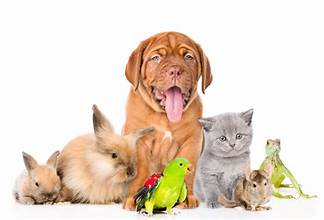Every pet, whether furry, feathered, or scaly, has a unique way of communicating. Knowing these signals can help you respond appropriately to their needs. Dogs wag their tails, cats purr, and parrots might nibble affectionately on your finger. Each action carries meaning, often reflecting their emotions, desires, or discomfort.
Canine Communication
Dogs are known for their expressive nature, making them relatively easy to read if you know what to look for. Here are some common behaviors:
- Wagging Tail:
It is a sign of excitement or happiness, but the speed and direction can alter the meaning. According to AKC, a slow wag might indicate uncertainty.

- Barking:
Dogs bark for various reasons, as in alerting you to danger, boredom, or seeking attention.
- Whining:
Often a plea for attention or an expression of discomfort.
Feline Moods
Cats, often perceived as mysterious, communicate through vocalizations and body language.
- Purring:
Typically, it is a sign of contentment, though sometimes it can indicate distress.
- Tail Position:
A high tail signifies confidence, while a tucked tail may indicate fear.
- Kneading:
A comforting behavior reminiscent of kittenhood, often displayed when a cat feels secure.

Exotic Pet Behaviors
Understanding exotic pets, such as reptiles or birds, requires a different approach. These creatures have evolved unique ways to signal their feelings and needs.
- Reptiles:
Lizards often change color to express mood or regulate temperature. Bearded dragons may wave as a sign of submission.
- Birds:
Parrots may mimic sounds or engage in playful biting as a form of interaction. If persistent, feather fluffing can indicate relaxation or, conversely, illness.
Meeting Your Pet’s Needs
Beyond understanding behaviors, addressing your pet’s specific needs is crucial to ensure its well-being. Proper nutrition, mental stimulation, and a suitable environment differ across species.
Nutrition and Diet
A balanced diet is the foundation of good health for any pet. Dogs and cats must have a diet that is rich in proteins and fats, while exotic pets like reptiles may need a combination of live prey and plant matter. For more detailed guidance, visit the ASPCA’s Pet Care section.
Environment and Enrichment
Creating an enriching environment is vital for your pet’s mental health. Consider the following:
- Appropriate Habitat:
For instance, if you have a bird, consider providing a variety of perches and toys to mimic its natural environment. If you have a reptile, ensure the temperature and humidity levels in its enclosure are suitable for its species.
- Toys and Stimulation:
Regular playtime and interactive toys can prevent boredom and destructive behavior.
- Routine and Structure:
For example, feed your pet at the same time each day, and establish a regular play and exercise routine. This can help reduce anxiety and promote a sense of security for your pet.
Tuning into your pet’s behavior to meet its basic needs can build a stronger, more rewarding relationship. At Positively Pets, we support you with expert advice and carefully curated products to enhance every aspect of your pet’s life. We invite you to share your experiences and tips in the comments section and explore our regularly updated blog to become part of a community dedicated to the well-being of furry, feathered, and scaly friends.





Pingback: How To Stop Your Dog From Digging Up Your Yard? - Positvley Pets